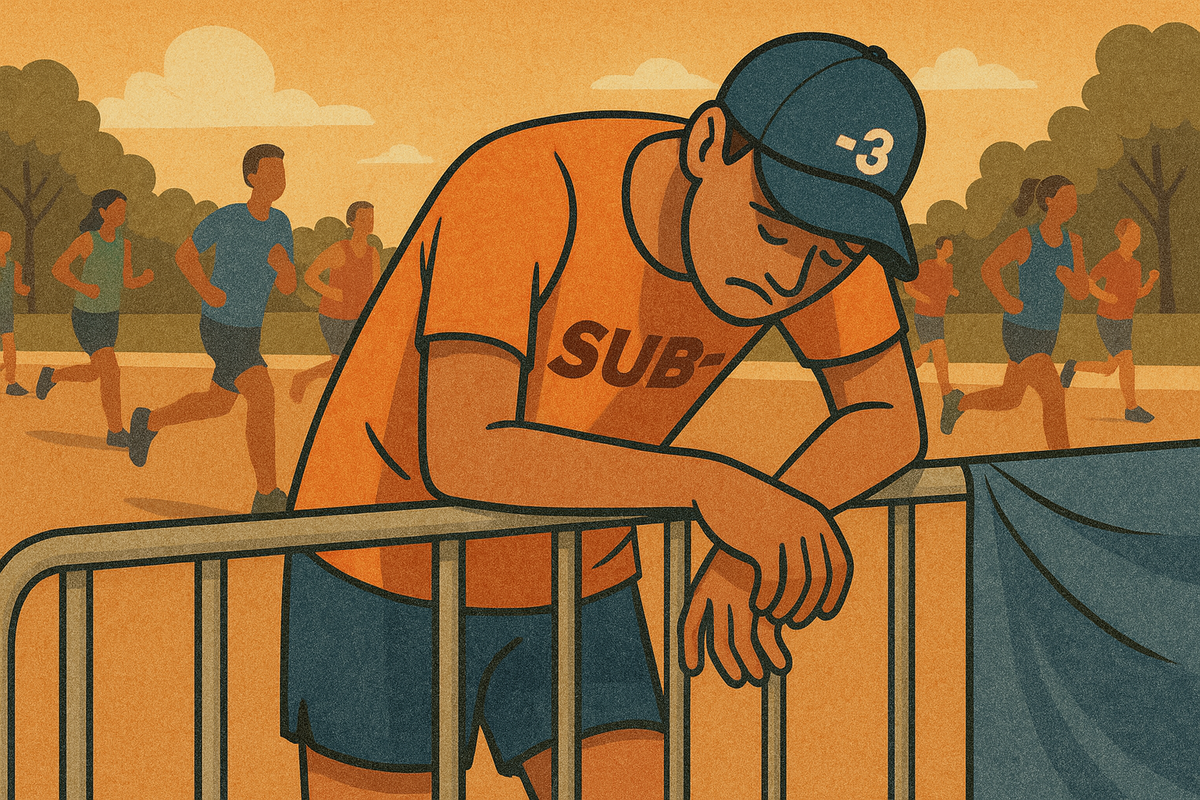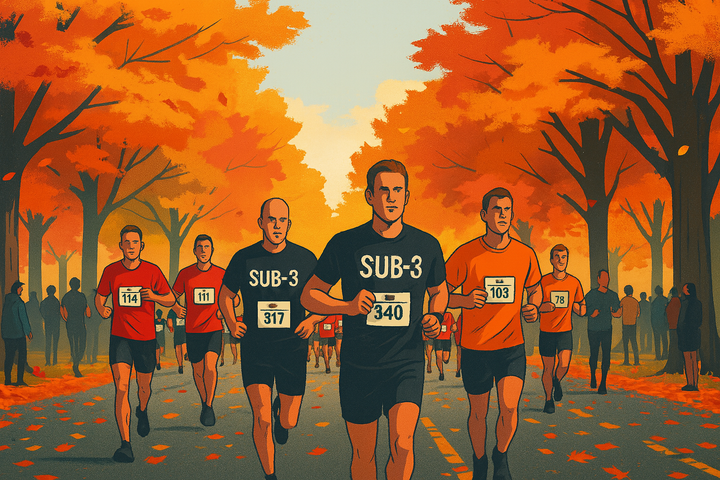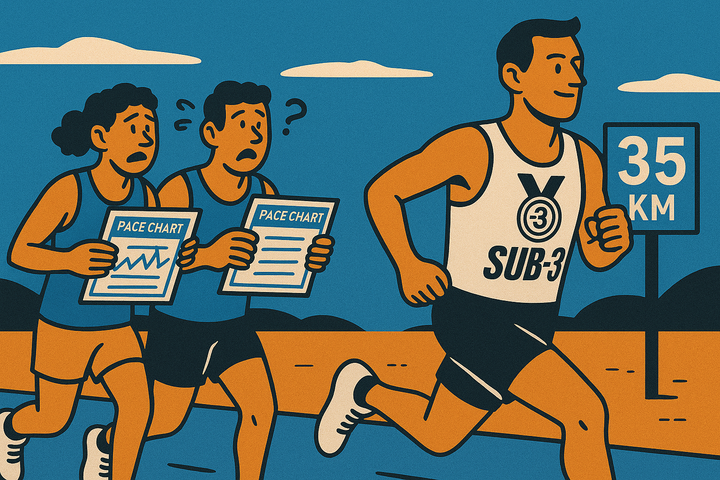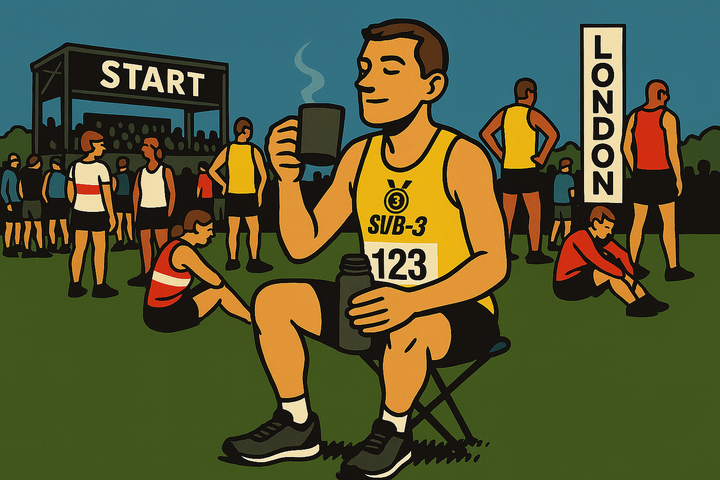When should you DNF during a sub-3 marathon attempt?
Knowing when to DNF isn’t weakness – it’s part of running smart. You don’t need to prove your grit every time you race.

I’ve never DNFed a marathon, but I did recently during a half – and it was the right call.
Two days before the race I woke up with inexplicable lower back pain. I tried everything: painkillers, osteopath, epsom salt bath, ice packs, yoga, even just Netflix and rest. I hoped it was just pre-race nerves and would dissolve in the adrenaline. But it didn’t. From the opening kilometre something felt wrong. The huge effort I was putting in wasn’t giving me anything back. Normally a half is about not going off too fast – this time I couldn’t even summon tempo pace. It was like pulling onto the motorway and seeing all the emergency lights flashing. I pulled over.
The decision was simple: I wouldn’t have finished, and I could feel that every step was doing damage. I took two days off. My legs were fresh midweek, and on Thursday – joy of joys – my back clicked back into place during a yoga session. By Saturday I was back in form, winning my local parkrun, and the following weekend I podiumed at a competitive 10K. None of that would have happened if I’d tried to push through.
There’s a deep stoicism in marathon culture – a belief that if you start, you finish. That it’s a test of character as much as fitness. Peter Pfitzinger and Scott Douglas even say in Advanced Marathoning:
“Most of the time, you should finish the marathon even if you're not running as well as you had hoped. The marathon is a test of endurance. If you casually drop out of a marathon once, it will be all too easy to drop out again.”
That’s the dominant view – marathon runners aren’t quitters. We suffer in silence, keep calm and carry on. It’s not just a British thing – both Pfitzinger and Douglas are American – but there’s something particularly English about this kind of stoicism. Finish no matter what. Stiff upper quad.
But is that always the best plan? In fairness to Pfitzinger and Douglas, they do lay out four clear reasons to DNF: if you’re limping, if pain is increasing, if you’re light-headed, or if you’re suffering from heat exhaustion, cramp or similar. My half-marathon effort ticked those boxes. But I’d go further.
I know elite runners who DNF just 10km into a marathon if something feels off. The logic is simple: if you’ve trained for months, and you know early that the race is going to be a disaster, why wreck your legs and squander your whole season for a disappointing result? You can’t bounce back quickly from a full-effort marathon. But if you stop early enough, you might be able to race again in a few weeks. That’s what I did after my half, and it paid off.
Even Kipchoge bailed from the Olympic marathon in Paris. He didn’t push on to finish out of principle. He stepped off the course.
There’s merit in the discipline of finishing what you start. But the idea that “once a quitter, always a quitter” is both outdated and patronising. You’re running this for yourself. No one else. If you’re not part of a team event or raising money for charity, then you owe it to yourself to make the call. And you’ll know when it’s the right one. Preparing for a marathon is a huge physical and emotional undertaking – and not a cheap one either. No one drops out lightly.
So yes, keep calm and carry on – until the moment you know it’s doing more harm than good. And if that moment comes, don’t be afraid to DNF. It doesn’t make you weak. It might just make you stronger next time.
What matters most is being able to make peace with it. And in my experience, that peace comes a lot quicker than you'd think.
Five things to consider before DNFing during a sub-3 attempt
- Is it pain or discomfort?
Learn to tell the difference. Marathons hurt – that doesn’t mean something’s wrong. But if the pain is sharp, worsening or affecting your form, that’s a red flag. - Will finishing cause lasting damage?
If you suspect injury, pushing through could mean six to eight weeks off. DNFing now might save your entire season. - Is there still something to salvage?
Not every race needs a PB – but sometimes it’s just not worth battering your legs for a time that will feel like a letdown. If you know you’ll be out there slogging through the final miles for a result that doesn’t reflect your training, it might be smarter to cut your losses and regroup. - Are you making the decision clearly?
Don’t quit in the fog. Take a minute. Breathe. Ask yourself whether this is about protecting your body or giving in to frustration. - How will you feel tomorrow?
Not just physically – mentally. Will you regret not finishing? Or will you be proud you had the discipline to stop, reset and go again?
Enjoyed this article? Help keep Sub-3 running — support us with a coffee.
To help fund the running of the site, Sub-3 is an Amazon Associate and earns from qualifying purchases. We only recommend gear or kit that has genuinely helped in our own running and that we believe is worth considering.



